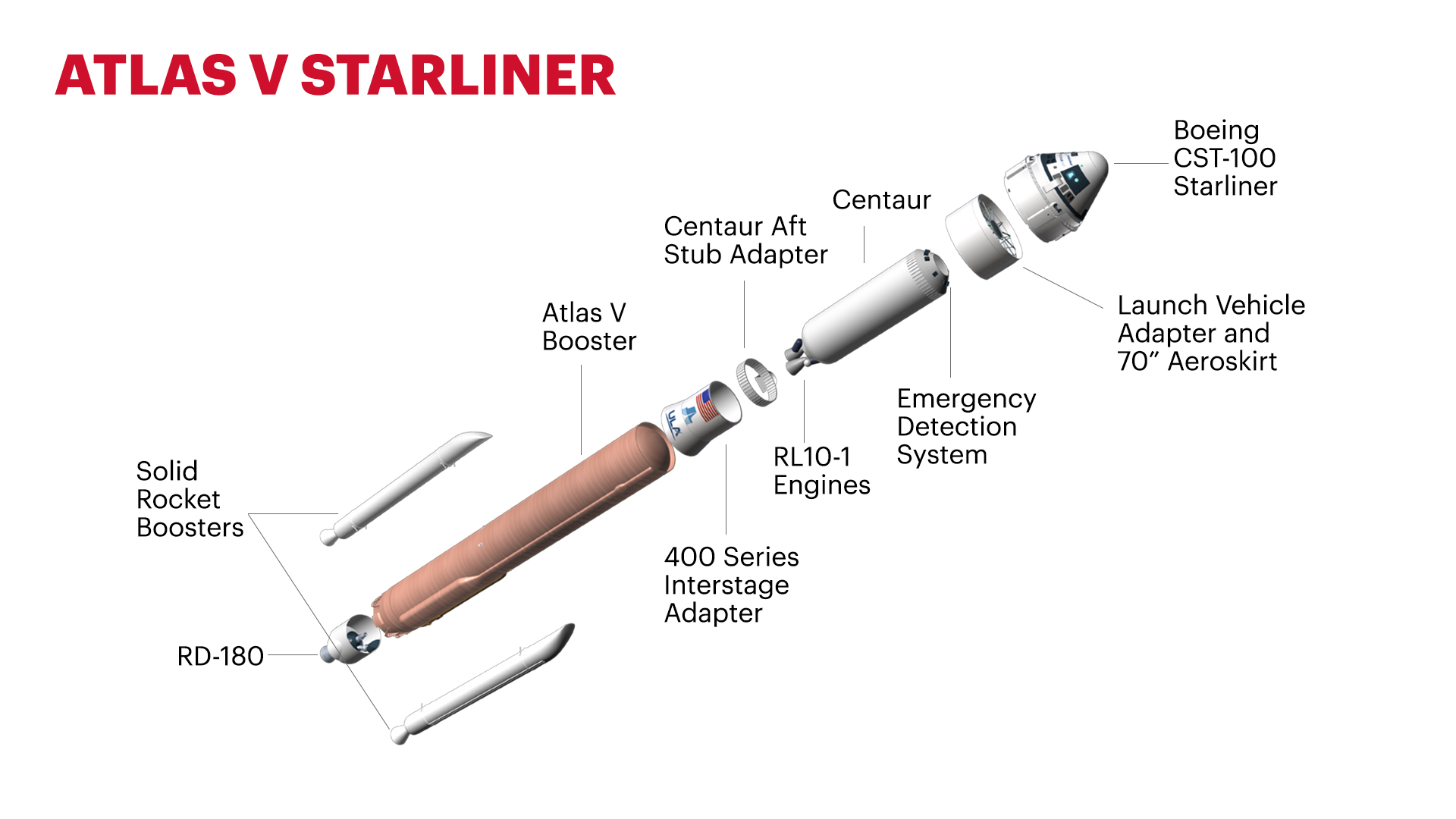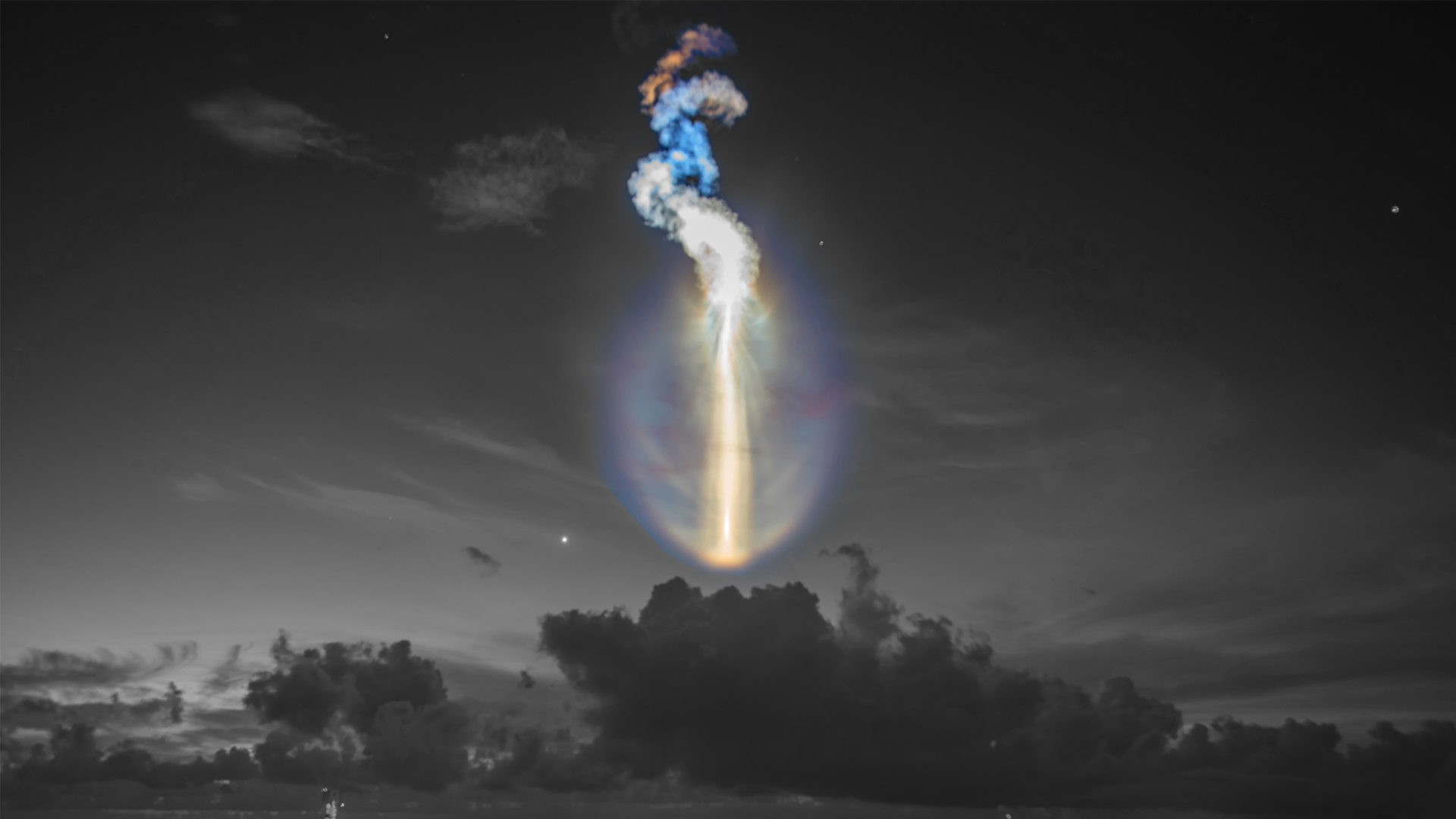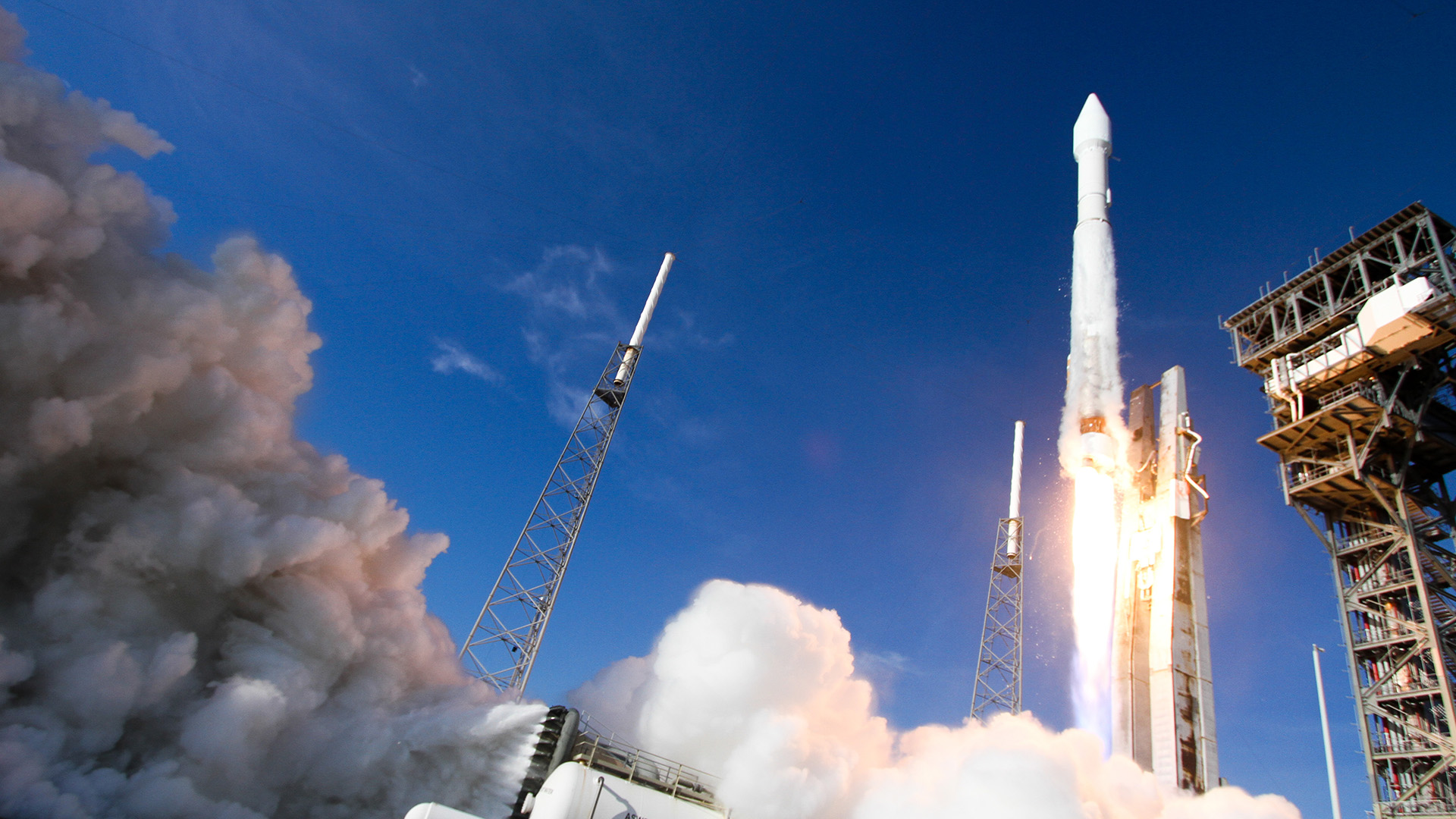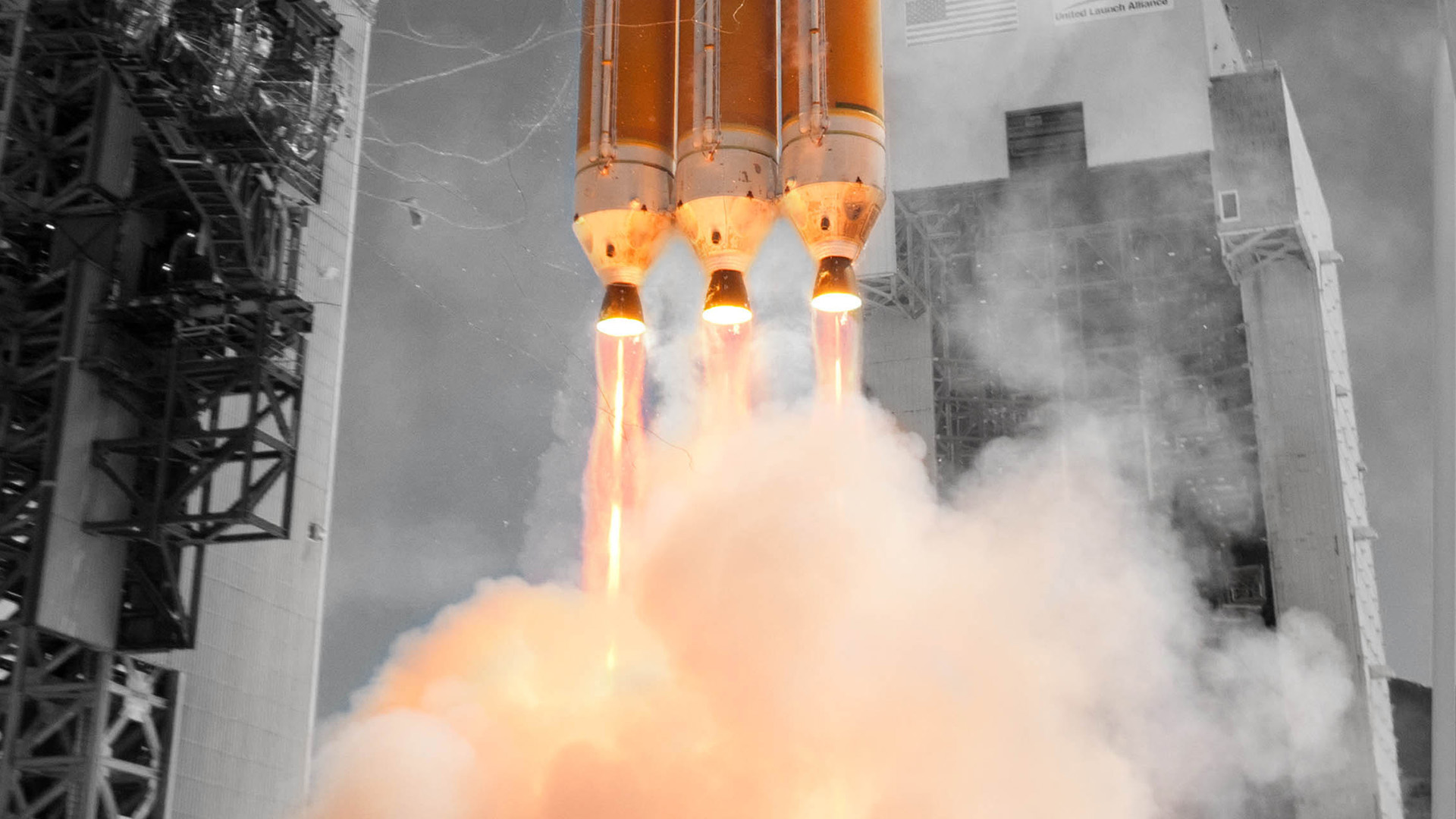Commercial Crew
Trusted.
Proven.
History.
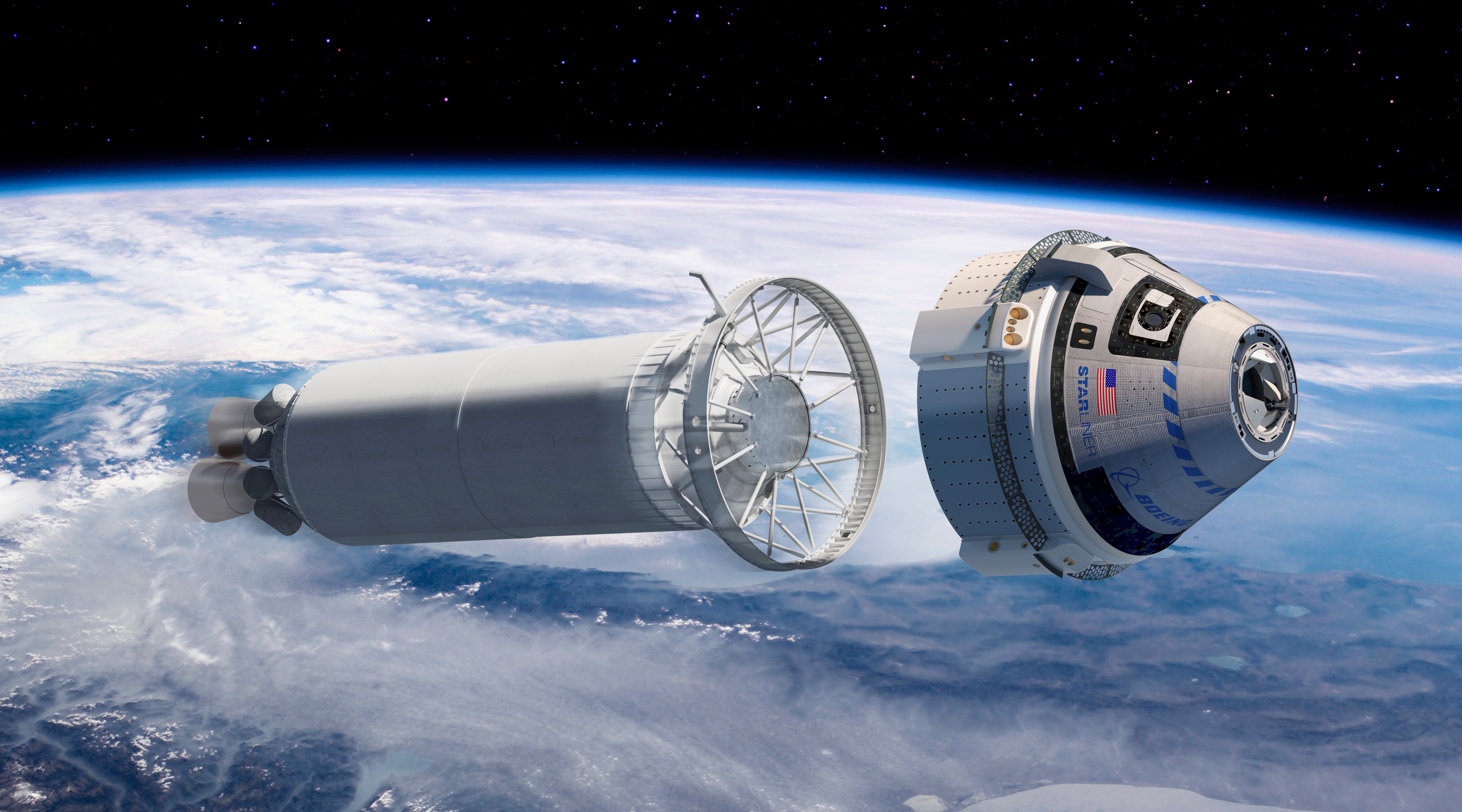
John Glenn became the first U.S. astronaut to orbit the Earth after being launched on a heritage Atlas LV-3B rocket from Cape Canaveral, Florida, in 1962. We are proud to continue this heritage as we prepare to launch the Atlas V Starliner.
NASA Astronauts Sunita "Suni" Williams and Barry “Butch” Wilmore, launched aboard the Atlas V Starliner on the Crew Flight Test (CFT) mission on June 5, 2024.
Safety is a critical part of the ULA decision-making process, and we fully understand the responsibility and honor of launching American astronauts. ULA has performed a tremendous amount of work in conjunction with Boeing and NASA to ensure our designs provide the highest level of safety to the crew.
Configuration
The Atlas V Starliner builds on ULA’s solid history of success and incorporates new technologies designed for crew safety.
Dual Engine Centaur: For CST-100 Starliner missions, the Centaur upper stage flies with two RL10A-4-2 engines, offering more thrust to accommodate the Starliner. It also helps shape the ascent trajectory to the Space Station.
Launch Vehicle Adapter (LVA) and Aeroskirt: The launch vehicle adapter (LVA) provides the structural attachment of the Starliner capsule to the Atlas V rocket. The LVA uses a truss structure and metallic ring to attach the spacecraft to the Centaur upper stage. ULA also designed a 70-inch-long aeroskirt to extend the Starliner aerodynamic surface, which enhances the aerodynamic characteristics, stability, and loads of the Atlas V for the unique crewed configuration.
Emergency Detection System (EDS): This system monitors various launch vehicle parameters to determine the health of the rocket and provides a capability to take action by signaling an abort command so the Starliner can escape if necessary.
Atlas V Starliner CREW FLIGHT TEST
For the first time in history, a United Launch Alliance (ULA) Atlas V carrying NASA astronauts aboard Boeing’s CST-100 Starliner lifted off on June 5, 2024 at 10:52 a.m. EDT from Space Launch Complex-41 (SLC-41) at Cape Canaveral Space Force Station, Florida. The launch of NASA astronauts Barry “Butch” Wilmore and Sunita “Suni” Williams marks the return of human spaceflight to Cape Canaveral and extends the Atlas legacy, echoing the launch of U.S. astronaut John Glenn aboard a heritage Atlas LV-3B rocket from Cape Canaveral, Florida, in 1962.


